Rameen Ghafoor
UX DESIGNER | APPLICATION CONSULTANT
Case Study: Enterprise RBAC & Program Lifecycle Management for Excise Systems
Key Takeaways
By transforming a complex, compliance-heavy admin system into a clear, role-based platform with guided program creation, granular privileges, and structured reviews, we cut program onboarding time by ~40%, reduced permission errors, and improved audit traceability across 8+ global brands.
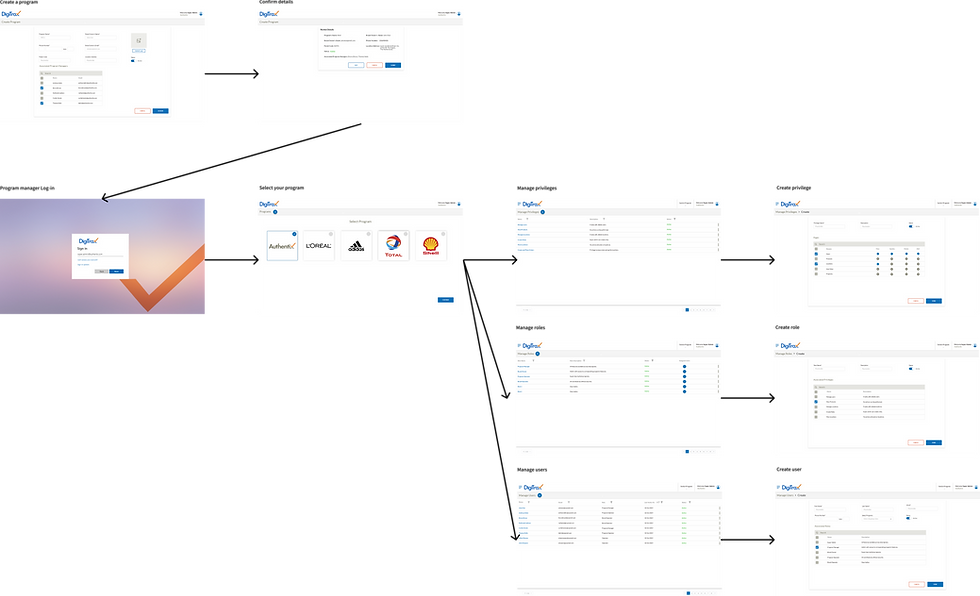
🧠 Project Context
The client needed a secure, role-aware admin system to manage the lifecycle of excise programs (alcohol, cement, and other regulated goods). Key requirements: - Role-based access control (RBAC) for admins, managers, operators. - Full program lifecycle: Create → Review → Assign roles → Operate → Audit. - Error prevention in privilege assignment and record creation. - Scalable table views with sorting, filtering, and status indicators.
🚀 My Role
- Led workflow modeling for program creation & privilege assignment. - Translated regulatory rules into clear user flows & permission models. - Designed and prototyped forms, dashboards, and tables. - Wrote user stories and worked with dev/QA to validate complex edge cases. - Facilitated cross-department requirement gathering (security, compliance, engineering). - Delivered demos & training materials for admin users.
🛠 Tools
- Design: Adobe XD - Product/Backlog: Atlassian, Aha - Research/Validation: user interviews, UAT pilots - Delivery: demo videos, training decks
✍️ Key Insights Found
1. Preventing Permission Errors in RBAC Setup
🧩Challenge:
Admins were misassigning access rights because privilege names were unclear and there was no real-time feedback on selected permissions — risking data exposure or compliance issues.
💡Solution:
Introduced a privilege matrix with grouped modules (Users, Products, Locations, etc.), checkboxes for View / Update / Delete / Add, and status toggles for activation. Sensitive actions show warning tooltips; “Done” stays disabled until at least one valid privilege is chosen.
🎯 Expected Impact:
Reduced misassigned roles & support tickets; faster, safer onboarding of admins.
🎯 Expected Impact:
Reduced misassigned roles & support tickets; faster, safer onboarding of admins.
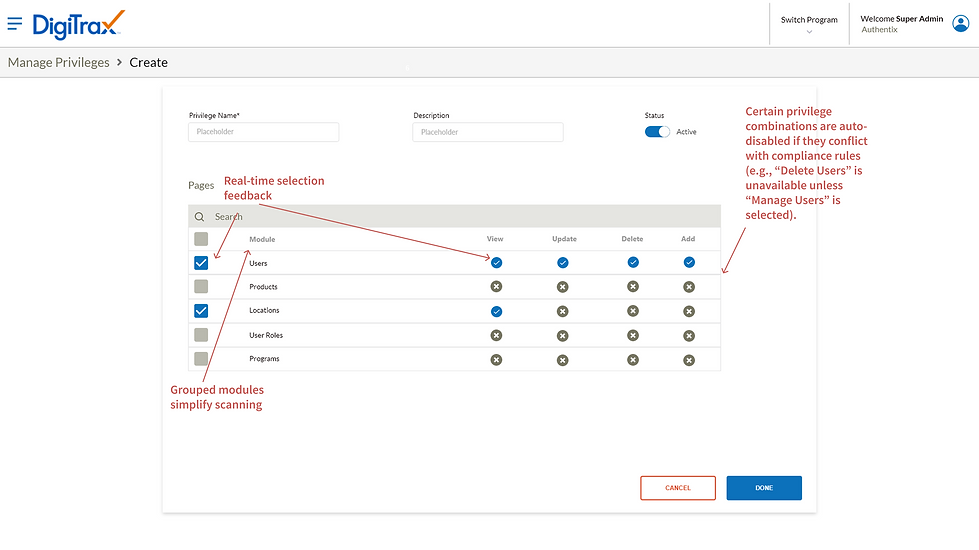
- Error Prevention – design the system to stop users from making mistakes before they happen (e.g., disable invalid privilege combos).
- Visibility of System Status – keep users informed about what’s selected or happening right now (e.g., active/inactive state, live totals).
- Clarity & Hierarchy – arrange content and actions so the most important items stand out first and the screen feels organized.
2. Reducing Form Abandonment in Program Creation
🧩Challenge:
Creating programs required entering multiple data points (brand info, managers, logo). Without structure, admins got lost or abandoned halfway.
💡Solution:
Built a progressive multi-step creation flow: - Step 1: Basic info (name, brand owner, contact). - Step 2: Assign program managers via searchable table. - Step 3: Logo upload + status toggle. - Step 4: Review & Confirm screen before submission to catch mistakes.
🎯 Expected Impact:
Increased form completion; reduced data entry errors; helped cut program activation time by ~40%.
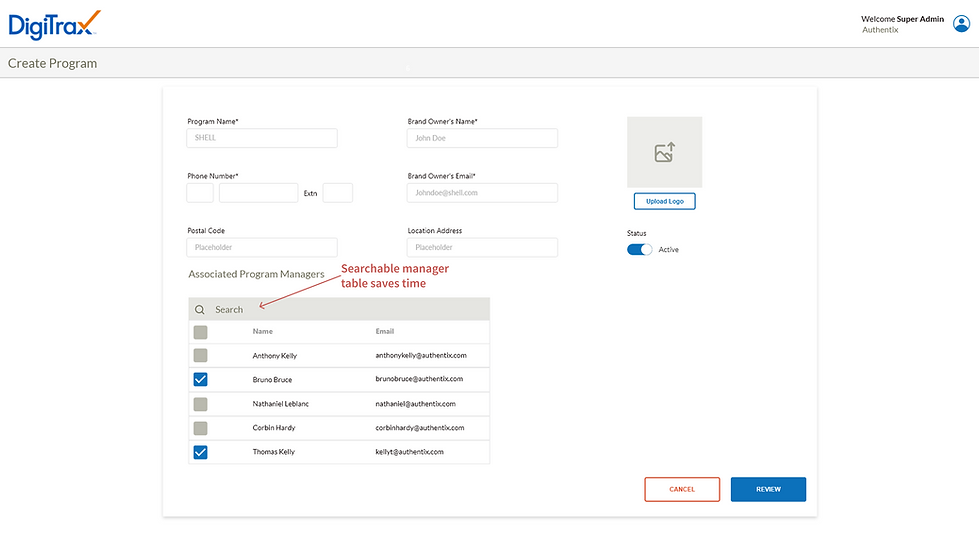
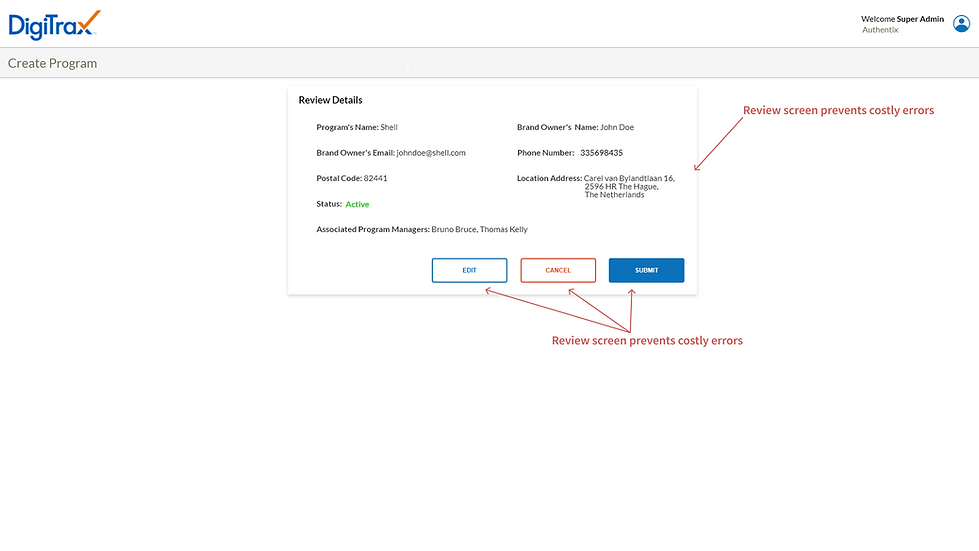
- Error Prevention – design inputs and logic to stop mistakes before submission (e.g., disable invalid options or block incomplete forms).
- Cognitive Load Reduction – simplify and chunk information so users can process and act without feeling overwhelmed.
🧩 My Process & Product Ownership
I mapped the entire ordering workflow from login to stamp delivery, ran stakeholder interviews, modelled regulatory steps, and translated findings into backlog/user stories. Designed and tested responsive flows (mobile-first), iterated on prototypes with compliance & dev teams, and supported UAT pilots and QA. Delivered training demos and documentation to drive adoption.
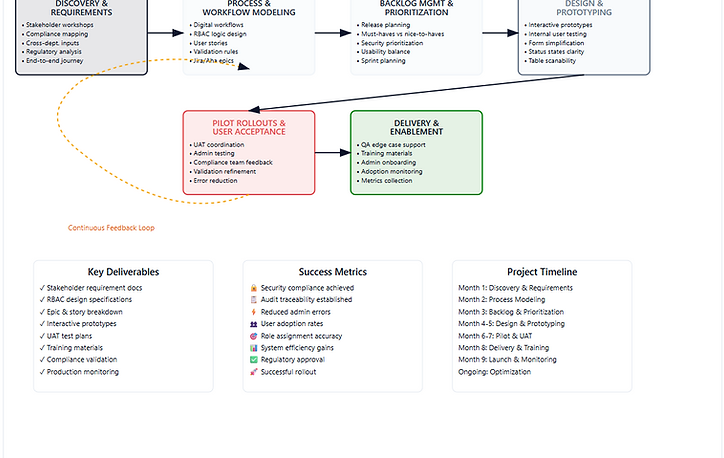
✅ Outcome & Impact
- 40% faster onboarding of new brands/programs by structuring creation & review. - Reduced RBAC misconfigurations — fewer escalations to security/compliance. - Improved auditability via clear privilege definitions & status tracking. - Positive feedback from admins: “Easier to assign roles without second-guessing permissions.”
🪞 Reflection
This project showed how enterprise UX + product ownership blend: - Translating complex regulatory workflows into usable, error-resistant tools. - Partnering with compliance, security, and engineering to build scalable RBAC. Next, I’d expand dashboard visibility for audits, add bulk actions & advanced filters, and integrate analytics to monitor adoption and permission accuracy.
